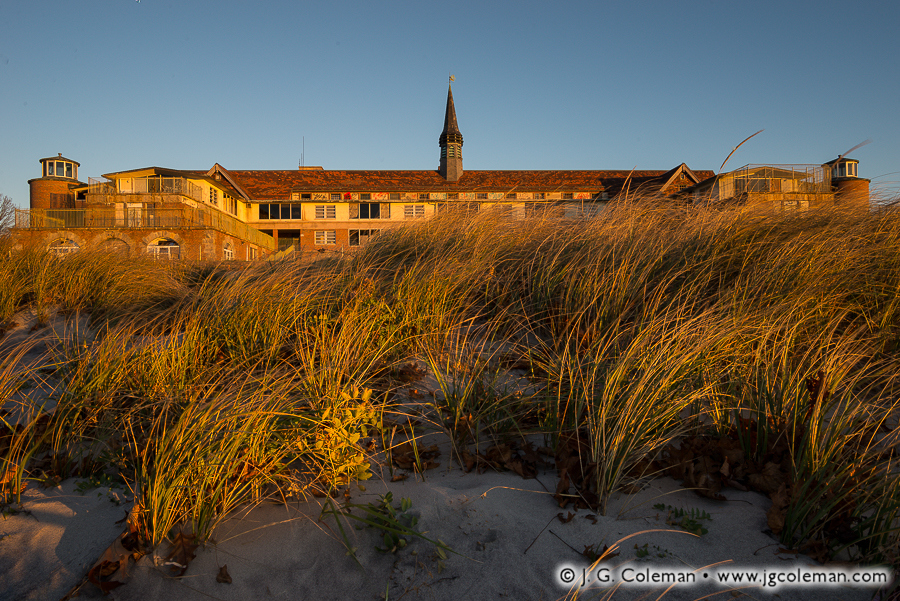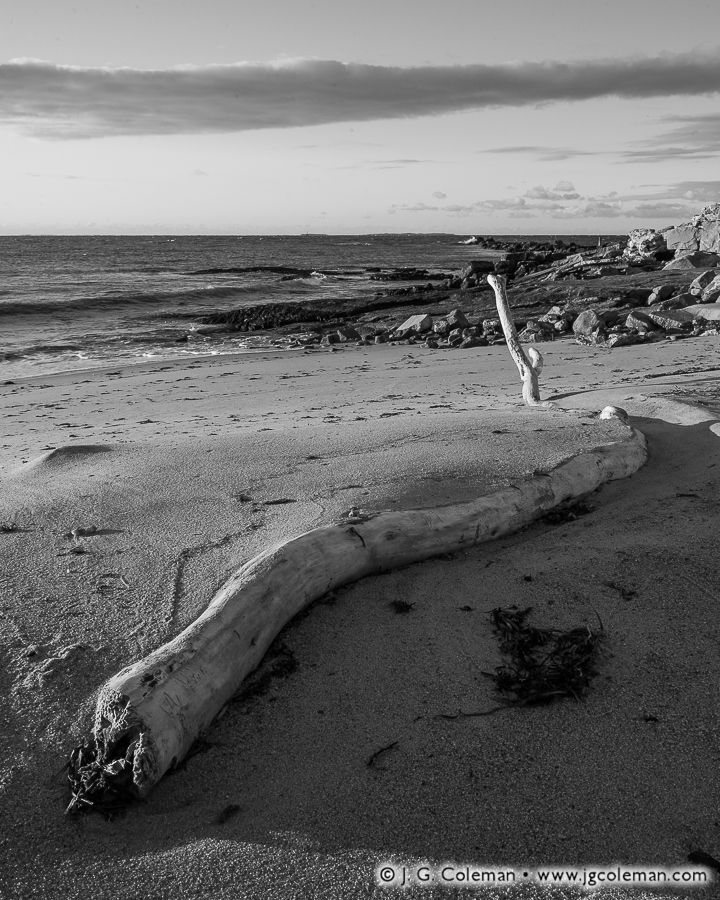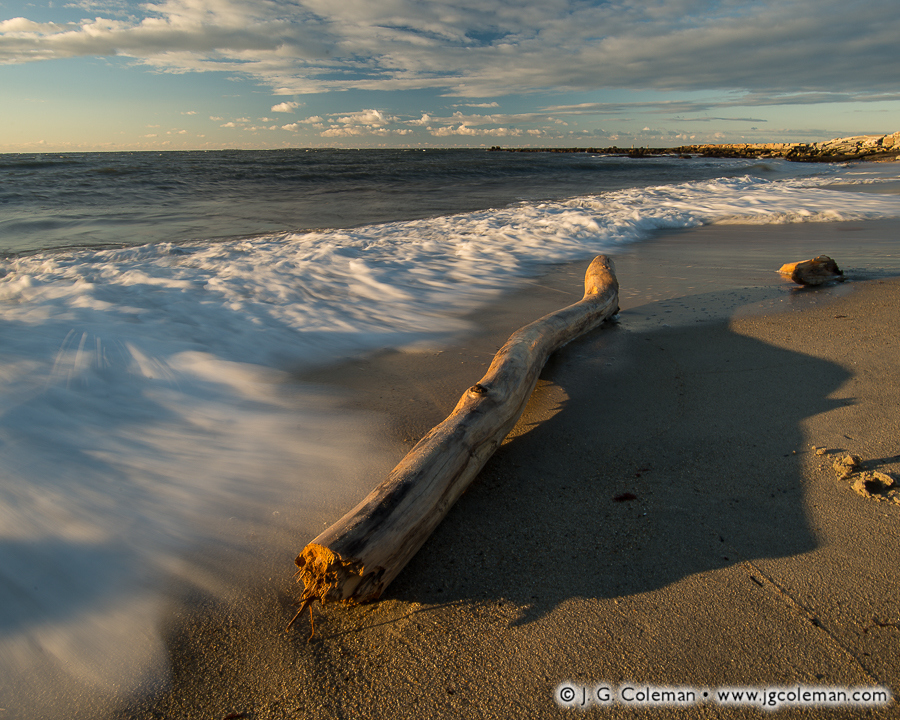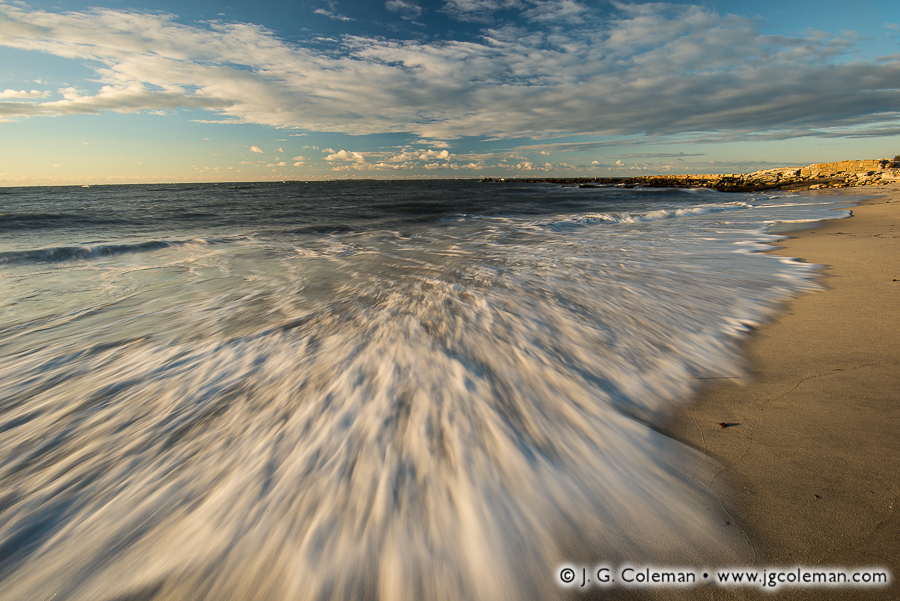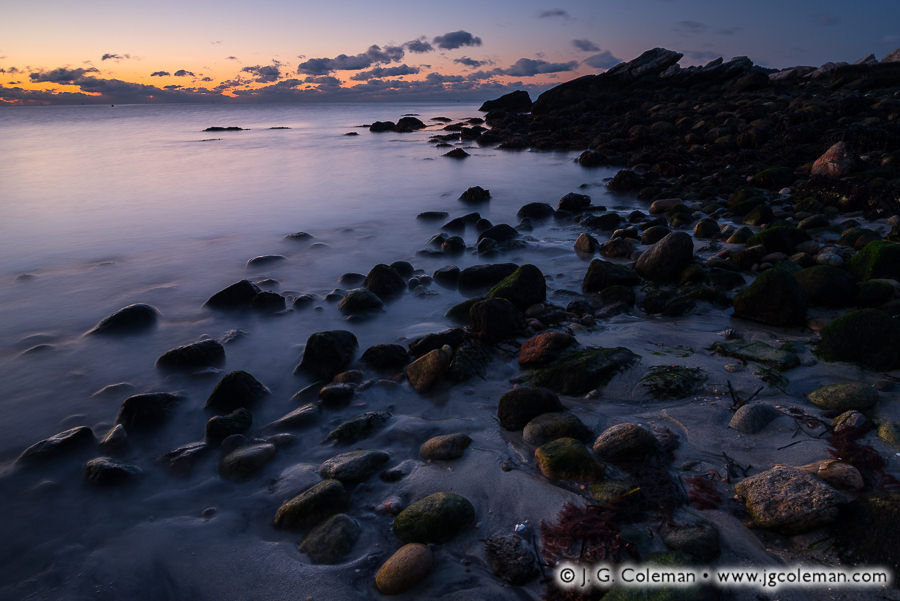When it was announced in late 2014 that Connecticut would be creating a new state park, I was all ears. After all, Connecticut’s diverse state parks are a treasure trove of publicly-accessible scenery which figure very prominently in my body of work. What I couldn’t have imagined was that this latest addition to the park system was, seemingly against all odds, a seashore park of more than 30 acres!
Dubbed “Seaside State Park”, this rocky stretch of beach where Long Island Sound laps at the Waterford mainland stands as the first new state-owned park along the Connecticut coast in more than two generations! That’s a big deal, folks, and I’ve been eager to experience this new place first-hand. As it would happen, it took more than a year before I finally stepped foot in the sand at Seaside State Park, but my visit earlier this month assured me that this unique landscape is a fitting addition to a state park system that boasts a marvelous range of variety. While you absorb my new work from Seaside, I invite you along to explore the origins and folklore behind this storied place.
If the creation of a new coastal state park in Connecticut is novel and a bit unusual in this day in age, then perhaps its a fitting installment in the equally novel and unusual history of Seaside State Park. While the crashing waves and panoramic views of the Sound rank high on the draws of this park, one cannot help but notice the massive, abandoned sanatorium that stands sentinel on higher ground just a stone’s throw from the water (see “Dunes and Echoes” above). The derelict building is at once beautiful and foreboding, its vacant windows peering out over the water from a gothic edifice which bears an eerie resemblance to the prototypical haunted mansion.
Known as “The Seaside” when it was constructed in the early 1930s on a magnificent beachfront in Waterford, the sanatorium would serve as Connecticut’s much-needed facility for treating children afflicted by tuberculosis. A noble cause for certain, but one which the medical knowledge of that era was ill-quipped to serve.
The treatment being administered was known as heliotherapy and consisted of little more than ensuring that the disease-stricken children got several hours of exposure to sunlight and fresh air each day. Coastal environments, of course, were the ideal place for such a treatment regimen. But while heliotherapy may certainly have succeeded in improving the morale of the young patients, it did next to nothing in the way of curing the terrible disease or significantly improving outcomes.
Thankfully, by the late 1940s, an antibiotic was developed which finally gave the medical community an effective tool to combat and cure tuberculosis. As the use of this revolutionary new medicine spread, mortality rates dropped off dramatically. The old concept of heliotherapy was abandoned and The Seaside sanatorium ceased to be medically relevant. The last tuberculosis patients to walk through its doors left in 1958.
The building was quickly repurposed as a healthcare center for the elderly, a provisional use which would last only a handful of years. It was converted to the Seaside Regional Center for the Mentally Retarded in 1961 and would go on to house and treat patients with intellectual disabilities right up into the 90s.
Popular folklore suggests that this final appropriation of The Seaside was concluded in 1996 when it was quietly decided by state officials that decades of terrifying patient abuse and a peculiarly high mortality rate among its residents simply had to be stopped. Yet, after conducting my own cursory research, I’ve come to the conclusion that these claims are likely to be false or, at best, wild exaggerations. It is true that, in the early 1970s, some current and former staff members claimed that the facility superintendent, Fred Finn, was mismanaging funds and abusing patients. Eleven employees of the facility testified against him at an official hearing. But the matter was complicated by the fact that many facility employees vouched for Finn; even the parents of many patients supported him, insisting that he was doing an excellent job. The official investigation considered the evidence and ultimately cleared the superintendent of all allegations.
And while we can speculate as to whether or not Finn was really innocent, the fact remains that this seems to have been the only real scandal involving The Seaside during more than 35 years of otherwise satisfactory operation as a mental health facility. Its closure in 1996 had nothing to do with sinister activity, but was instead the result of layoffs and budget cuts as the governor shifted the focus of mental health care from regional institutions to community-based solutions. So where did all of these stories of terrorized patients and staggering death tolls come from? Well, I guess that every “haunted sanatorium” needs a scary story, even if that story needs to be mostly fabricated. The vast majority of deaths at the facility occurred during its earlier use with tuberculosis-afflicted children who were claimed by a terrible and largely incurable disease; far from being abusive, doctors of that era were doing everything they possibly could.

Long Island Sound at Seaside State Park, Waterford, Connecticut
© 2015 J. G. Coleman
You may remember that I described The Seaside earlier as both beautiful and foreboding. It’s beauty, in particular, is a point of great concern among those who feel that the crumbling building ought to be preserved in one way or another as part of this new state park’s development. The architect was none other than Cass Gilbert, a fairly famous individual whose designs include the prestigious G. Fox Building in Hartford, Connecticut and even the US Supreme Court Building in Washington, D.C. While The Seaside may not have been among his more famous creations, it certainly bears his characteristic refinement and attention to detail. But with the buildings having sat unused for almost 20 years now, its difficult to say if a rehabilitation project is feasible or cost-prohibitive.
As yet, no firm plan has been established for how Seaside State Park will be developed in the coming years. The fate of the old sanatorium is just as uncertain as that of the earliest tuberculosis patients that it housed so long ago. But the seashore itself is, and will probably remain, much like it has been from the beginning. As the waters faithfully rap away at rock jetties during sunrise, its easy to be lulled into a contemplative tranquility by the uncomplicated beauty of The Sound. But we must not forget the droves of unfortunate souls who once called The Seaside home. These were the reassuring summertime vistas to which they arose in the morning… this was the tempestuous coast whose storms sometimes kept them awake at night. For some 60 years, this place was the abode of those who were dealt a rough hand; most have been forgotten, but they remain bound up in these sands and waters and their stories are whispered in the hush between breaking waves.
Purchase a Fine Art Print or Inquire About Licensing
Click here to visit my range of imagery from Seaside State Park where you can browse larger version of the photography above, purchase beautiful fine art prints or inquire about image licensing.



